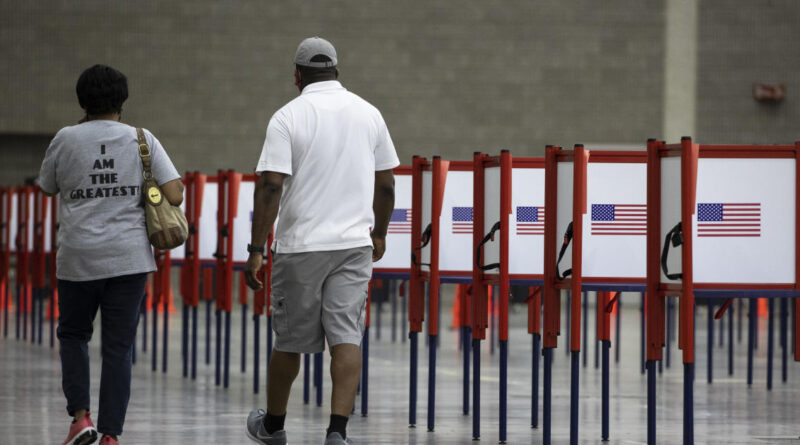What is the “Rising American Electorate” and will it turn out?
This story is part of a new CBSN series focused on voting rights called “America’s Right to Vote.” See the previous episode here.
Voters like Dontay Phillips are among the most prized of this election cycle. A recent graduate of a historically Black college, Phillips is part of what’s become known as the “Rising American Electorate,” made up of young voters, people of color, and unmarried women. Combined, these three groups account for 53% of Americans who voted in 2016. And in 2020, turnout among this group could be even higher — if campaigns succeed in engaging them.
“A lot of us have this kind of like woke mentality, where we’re paying a lot more attention to the issues around us. If you really want young people to vote, you’re going to have to talk about things that they’re interested in,” said Phillips, who plans to vote by mail in Utah.
“With the incredible energy and commitment to our democracy coming out of the George Floyd protests, we’re seeing increased interest in voting and increased interest in learning how to participate in our democracy,” says Tom Lopach, the president and CEO of the non-partisan Voter Participation Center, an organization helping to register and mobilize this group of voters during the pandemic. “We are living in a moment. More than ever, where Americans are seeing the direct connection between their lives, their challenges, their opportunities and how government serves them.”
But that doesn’t mean these voters are just willing to cast their ballot for just anyone. Corey Prince, an organizer in the key battleground of Wisconsin says African American voters under 50 “are starting to realize that we don’t have to be devoted to a party, that we need parties to be devoted to us.”
Prince complains that he hasn’t seen enough engagement from the Biden campaign. “The voters feel disengaged, they feel unheard. They feel that the issues that are important to them are not on the mouths of the politicians who are trying to be elected or want to be representing the people,” Prince said. “We don’t owe anything. We’ve paid that we’ve paid our debts. And so it’s time to be paid back now. And so for people who want our votes, they need to cater to our votes. They need to cater to our issues. They need to listen to the things that we’re talking about.”
While turnout among young voters and Asian Americans increased slightly in 2016, turnout among African Americans dropped seven points. Overall, nearly 7% of eligible voters in the Rising American Electorate didn’t vote four years ago. (Still, the Brookings Institution points out that Black voter turnout, at 59.6%, was higher than Asian turnout by over 10 points (49.3%) and also that of exceeded Hispanics, (47.6%))
Former First Lady Michelle Obama has focused on urging the Rising American Electorate to turn out this year, pointing out what happened when some opted not to in 2016. “Four years ago, too many people chose to believe that their votes didn’t matter. Maybe they were fed up. Maybe they thought the outcome wouldn’t be close. Maybe the barriers felt too steep,” she said in her speech to the Democratic National Convention last month. “Whatever the reason, in the end, those choices sent someone to the Oval Office who lost the national popular vote by nearly 3,000,000 votes. In one of the states that determined the outcome, the winning margin averaged out to just two votes per precinct — two votes.”
But Victoria Sandoval, a 24-year old organizer in Laredo, Texas, a state with one of the largest shares of the Rising American Electorate, believes the reason many in this voting group don’t show up is less about apathy and more about access.
“I’m not worried about people not turning out. I’m worried about how accessible this election is going to end up being for people who need to vote, whose voices need to be heard,” she said.
One of the barriers for this group is registration. Members of the Rising American Electorate tend to be transient, moving between election cycles and less likely to own a home, according to data from the Voter Participation Center. These voters are also more likely to live below the poverty line.
“I understand not wanting to engage with the system. But I also think that if every single person who is an eligible voter who feels that way did engage with the system and did vote, our country would look so different,” said Sandoval.
“I feel like people are aware of the size of the demographic, but I’m not sure if they’re aware of the impact,” says Phillips. “Depending on how this election plays out, I’m sure people will become more aware of just how influential our demographic is.”



